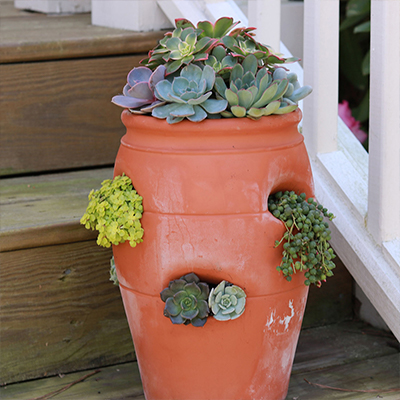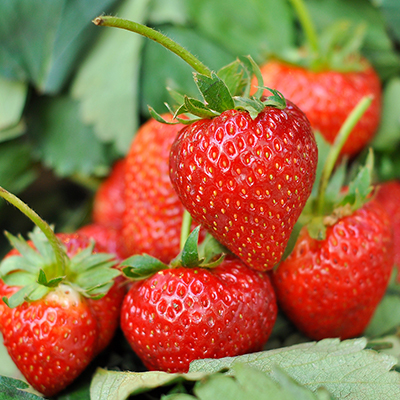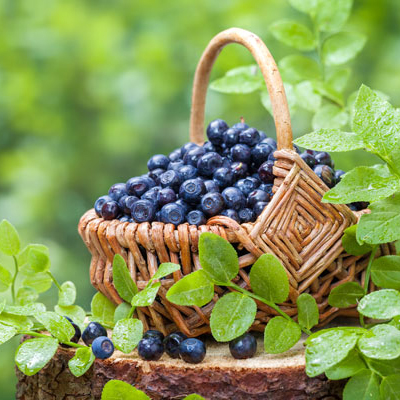How to Grow Strawberries

Last updated September 7, 2023
Juicy, sweet strawberries right off the plant — who wouldn’t want them in the garden? Supermarket berries tend to be tart with a grainy texture because the natural sugar in berries begins turning to starch as soon as they are picked. Strawberries are easy to grow in home gardens. They are winter hardy throughout most of the country and will come back year after year in zones 4 to 9.
Why not plant your own berries and taste the difference with fresh from the garden fruit? In this guide, learn how to grow strawberries in your home garden.
Table of Contents
Choose Your Strawberry Plant
When to Plant Strawberries
How to Plant Strawberries
Grow Strawberries in Hanging Baskets and Strawberry Jars
How to Care for Strawberries
Choose Your Strawberry Plant
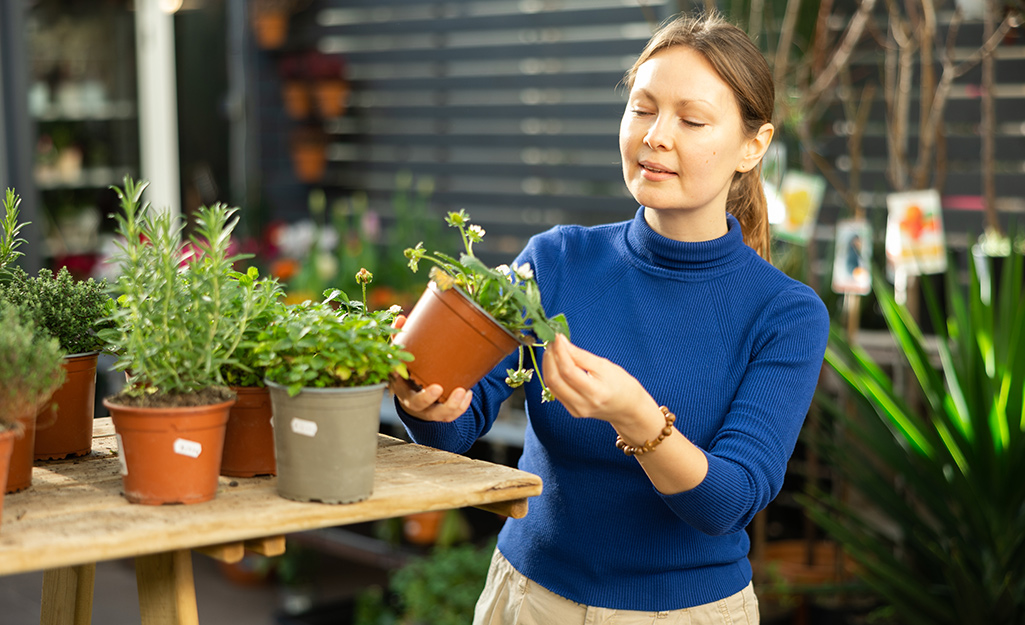
There are three types of strawberry plants: June-bearing, everbearing and day-neutral. All strawberries need to grow in full sun. Remember that more sun (up to 10 hours) equals more fruit.
June-bearing strawberries produce a single large harvest in late spring or early summer (not just in June) depending on where you live. In the Garden Center, look for varieties like Allstar. June-bearing varieties are typically winter hardy in zones 4 to 9.
Everbearing strawberry varieties produce several harvests of fruit throughout spring, summer and fall. In the Garden Center, look for Quinault everbearing strawberry plants. Everbearing varieties grow best in zones 4 to 8. Everbearing strawberry plants do not send out many runners and are ideal for patios and containers.
Day-neutral strawberries are improved varieties of everbearing strawberries. They produce fruit throughout the growing season. Because they’re everbearing, day-neutral varieties send out few runners. Use day-neutral varieties where space is limited, but keep in mind the fruits are usually smaller than June-bearers. In the Garden Center, look for day-neutral variety Albion. These plants produce continually when temperatures remain between 35 to 85 degrees Fahrenheit.
Tip: Woodland strawberries, also called Alpine strawberries, are day-neutral plants that produce small, one-inch fruits. These types of strawberries can be grown as groundcovers in northern zones.
When to Plant Strawberries
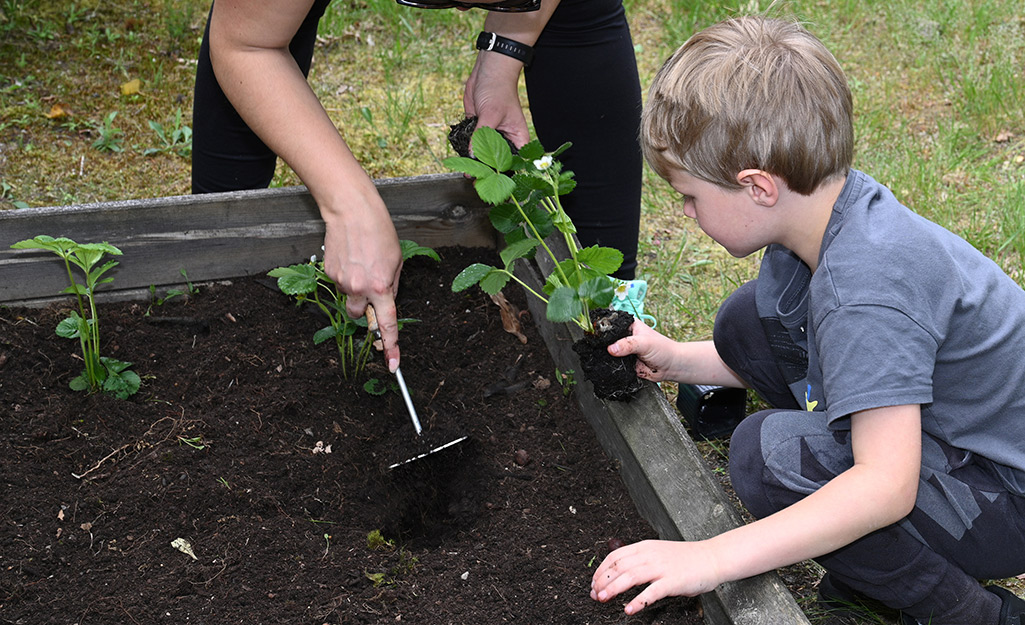
The best time to plant strawberries is early spring, when plants become available in the Garden Center and soil is workable.
You can plant strawberries any time during the growing season after spring. You will need to water more often and you may have to protect new plants from harsh sunlight until they are established.
Select a spot in full sun (at least 8 hours in summer) with loose, fertile, well-draining soil and a pH between 5.5 and 6.8. Check with your local Cooperative Extension Service for a low-cost soil test or purchase a soil test kit. Before planting, test your soil and follow the recommendations for amendments like organic compost.
If your ground soil is not ideal for strawberries, try raised garden beds or containers instead. Raised beds let you develop the rich, friable soil that strawberries need to thrive. A mix of garden soil and organic compost for drainage gives plants a healthy start. You can add vermicompost for improved pest and disease resistance.
How to Plant Strawberries
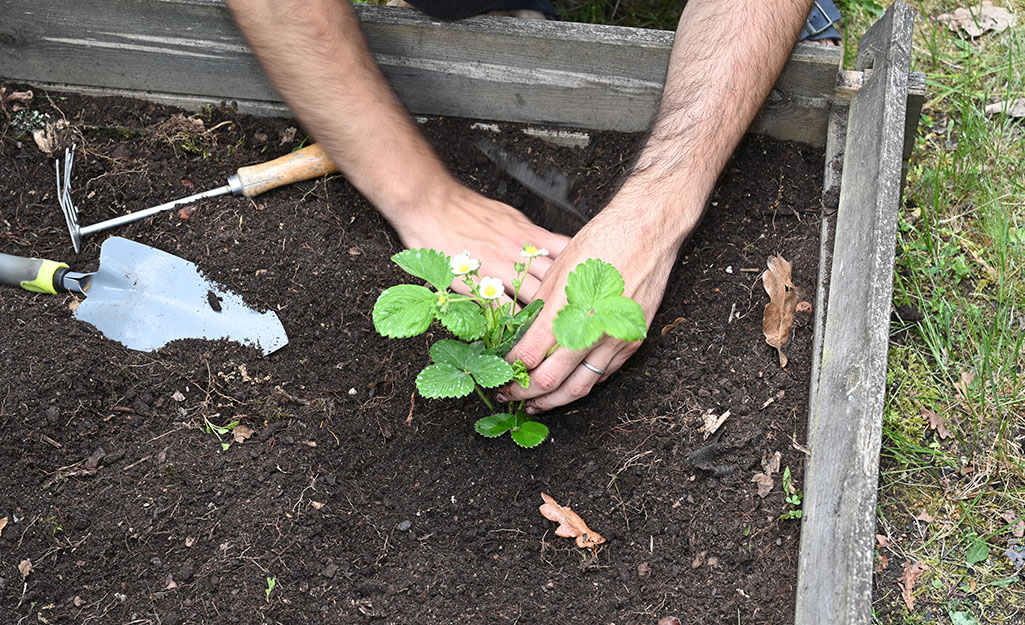
Once your strawberry bed is prepared, you’re ready to plant. The spacing for strawberry plants varies depending on the variety. Strawberries that produce runners need up to 20 inches between plants. Varieties that send out fewer runners need just 6 inches between plants. Always check the plant tag before planting.
- Space plants according to plant tag recommendations.
- Dig hole as deep as the root ball.
- Gently remove the plant from the container and loosen the roots.
- Plant the crown (the plant’s above-ground part) at soil level; firm soil around it.
- Mulch bed with a couple inches of organic compost.
Grow Strawberries in Hanging Baskets and Strawberry Jars
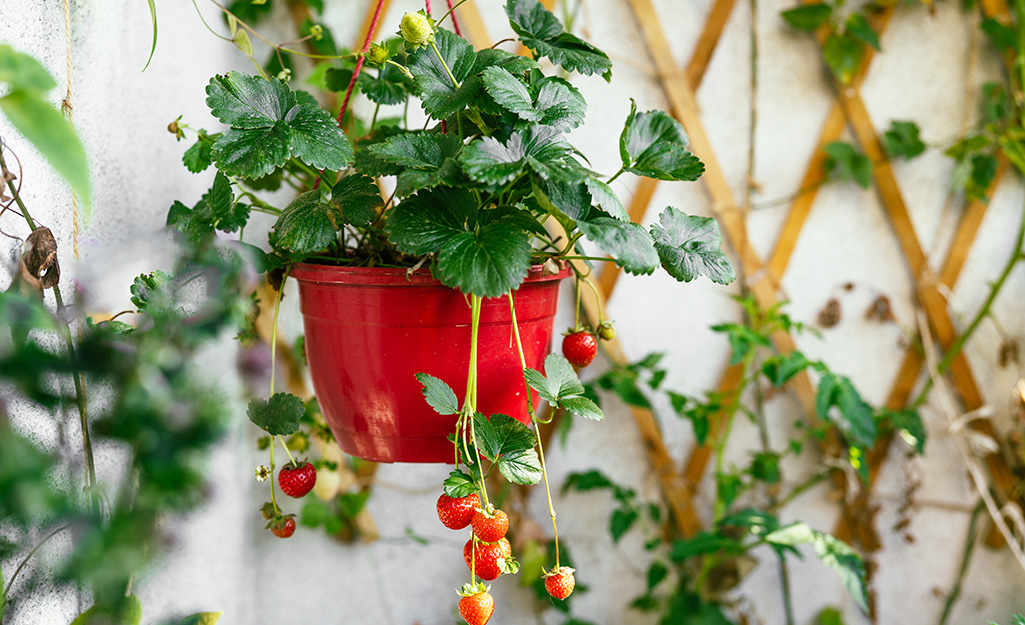
Strawberries are fun to grow in containers like hanging baskets, strawberry jars and grow bags. This often works for a season, then you can divide the plants and place them in larger containers, raised beds or in-ground.
Consider grow bags for fruits like strawberries. They’re portable, lightweight and allow plants to grow extensive roots.
Grow Strawberries in Hanging Baskets:
- Make sure the container has drainage holes in the bottom.
- Using a mix of two parts organic potting soil, one part organic compost and 1/2 cup of time-release fertilizer, fill the container. Leave 3 inches at the top.
- Lightly loosen the roots of each strawberry plant.
- Arrange plants in pots. Keep roots covered and the crown always above the soil line.
- Thoroughly water your strawberry plants.
- Keep the container in a shady spot for a few days. Then move it to a place where the plants will get at least 6 hours of sun each day.
- Flowers and fruit will appear when the weather warms in spring.
How to plant a strawberry jar or a grow bag with side pockets:
- Add a few inches of moistened soil or soil mix up to the bottom of the first pocket.
- Tuck strawberry plants in the bottom row pockets, setting at an angle.
- Continue to add more soil to the height of each pocket, putting one strawberry plant in each pocket.
- When you reach the top of the jar, plant one or two strawberries on top and add a layer of compost.
- Water the pot well from the top and water each of the pockets.
- Make sure the pot has plenty of sun and keep it watered.
Tip: The strawberry fruit we love to eat is 90 percent water. Plants grown in small containers like hanging baskets and strawberry jars need a lot of water every day to produce tasty fruit. Plan to water often.
How to Care for Strawberries
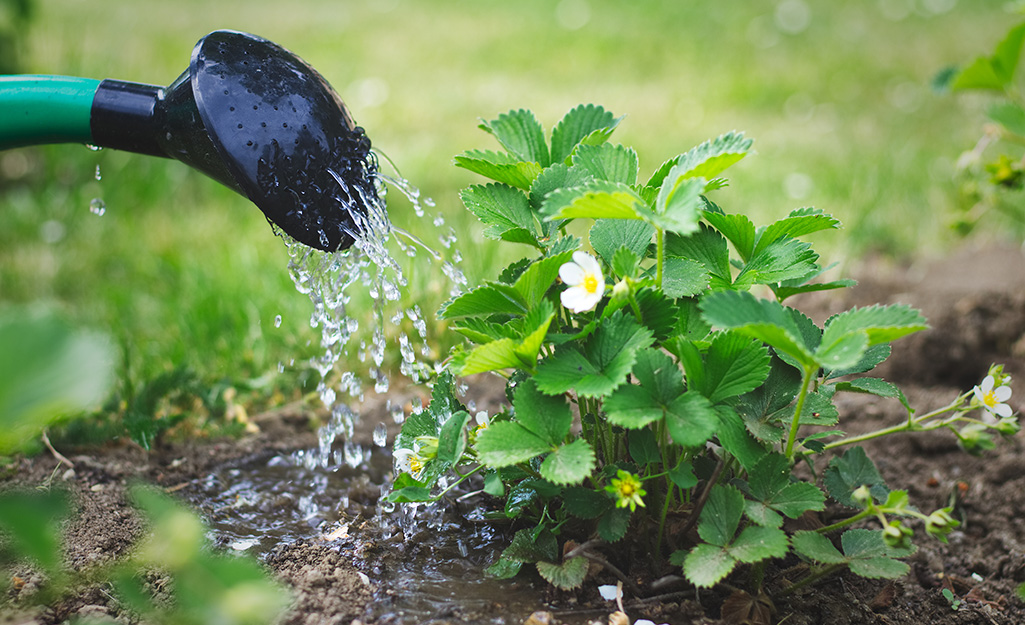
Strawberries bloom in early spring and set fruit after pollination. Apply organic fertilizer throughout the growing season. A single application of vermicompost in spring will supply your plants with nutrients throughout the growing season.
The best time to water strawberries is early in the morning. Be sure to water at the base of the plants, and not on the leaves. Drip irrigation is a good solution for consistent watering.
Properly planted strawberries are hardy perennials in most of the country. They will die back in winter and rebound in sun-warmed soil in the spring. When runners appear, clip most of them off to encourage more fruit production. Plant the runners in pots and expand your strawberry beds or share with friends.
Strawberries are ready to pick when they turn red. Harvest berries in the cool of the morning and refrigerate until ready to eat.
Strawberries are fairly disease and pest-resistant. Slugs will chew holes in fruit. Discard the fruit and the slugs, if you see them. Organic mulch like straw discourages slugs. Experts recommend using plastic mulch if slugs are a problem.
In humid summer temperatures, fungal diseases can cause dark spots on leaves. Snip off damaged leaves and discard in the trash.
Birds like berries, too. If they’re a problem in your garden, cover plants with lightweight bird netting to protect ripening fruit.
Strawberries are easy for most gardeners to grow at home. When you choose the right variety, you can enjoy sweet fruit throughout the growing season. When you're ready to plant and need the right tools, plants or soil, The Home Depot delivers online orders when and where you need them.





